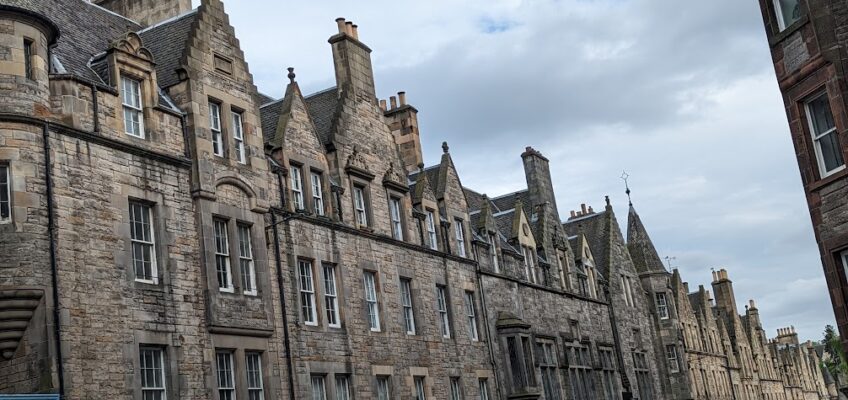In my first day-and-a-half in Edinburgh, I’ve already seen and done so much! And yet, it feels like I haven’t even begun to scratch the surface. This city is amazing. Every direction I look, I see something fascinating, beautiful, historic, magical.
I won’t give a blow-by-blow account of all my activities; you can follow my photo albums for that. I’m breaking them into one for each day here, so for each one, you can see what I did that day.
A little history
One of the places I went yesterday was Gladstone’s Land. (A “land” is what we might refer to today as a townhouse.) This is a house with history going back to the 16th century. Since I love history, I really enjoyed visiting this house, which has three levels decorated as the house might have looked in three different time periods.
The Day Two album has photos and descriptions. But there was also an infographic with a fascinating timeline
History of Gladstone’s Land
This is called a history of Gladstone’s Land, but it really has a lot to say about Edinburgh’s history.
1501: The first record of a building on the site.
1550s: The oldest part of the current building is constructed.
1617: Thomas Gladstone and Bessie Cunningham buy the property and it becomes Gladstone’s Land. They extend it to the front and commission the three painted ceilings.
1631: A document transferring ownership of part of the property lists the tenants at the time. These include a member of the aristocracy, a minister, a guild officer and a merchant.
1718: George Langlands, a prominent surgeon and apothecary, marries Thomas Gladstone’s great-granddaughter, Annie Marshall. They move into Gladstone’s Land where they live and work for more than 30 years.
c.1730s: George Langlands and Annie Marshall extend the property to the east, creating this room.
1766: The plans for Edinburgh’s New Town are approved. Work starts the following year.
1770–1820: The wealthy move out of the Old Town and into the New Town. Gladstone’s Land and the Old Town start to decline.
1865: Henry Littlejohn publishes his Report on the Sanitary Condition of Edinburgh which condemns the poor living conditions of the Old Town.
1878: Mr Fraser, Burgh Engineer, alleges that Gladstone’s Land is not suitable for occupancy “on account of its defects in structure, ventilation, want of repair and uncleanliness”.
1895: The back part of Gladstone’s Land is demolished as part of widespread clearances.
1911: The census lists 55 residents living in 12 apartments in the building. A dairy and a public house operate from the ground floor.
1933: Parts of Gladstone’s Land are declared as “unfit for human habitation and not capable of being made fit” by the council.
1934: The National Trust for Scotland purchases Gladstone’s Land.
More history
This afternoon I’m hoping to visit the Georgian House. Like Gladstone’s Land, this is a property of the National Trust for Scotland, a “charity that cares for, shares and speaks up for Scotland’s magnificent heritage.” They own 88 visited properties around Scotland, including quite a few places I’ve already been to.
The Georgian House sort of does for the New Town what Gladstone’s Land does for the Old Town. I’m looking forward to seeing the continuation of the story.
Theatre
Last night I went to see a The Stamping Ground at the Festival Theatre. This is a new musical based on the music of Runrig. I’d never heard of them, but apparently many in the audience were very familiar with their music, as I heard some humming along.
The show was excellent. I loved the music, and it was used to tell a contemporary story set in the Scottish Highlands, based on themes of family, economic and environmental concerns, and heritage.
During the curtain call, the entire cast led the entire audience in the singing of “Loch Lomond.” It brought tears to my eyes as I remembered visiting Loch Lomond near the beginning of my Scotland adventure and now being near the end.
I will do my best to make the most of these last few days.


Leave a Reply